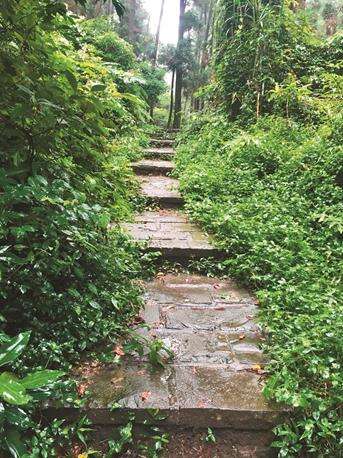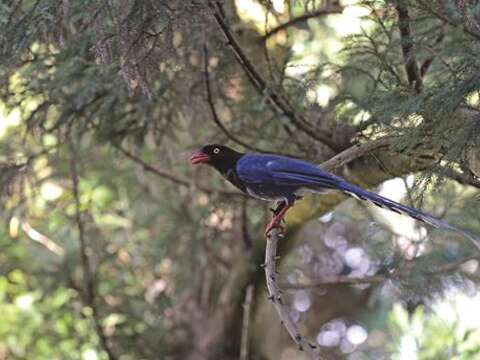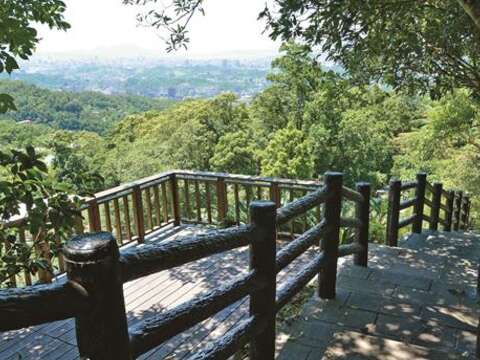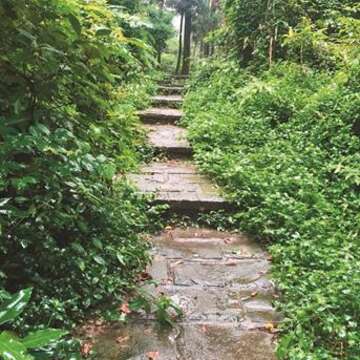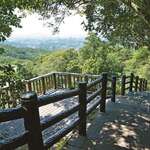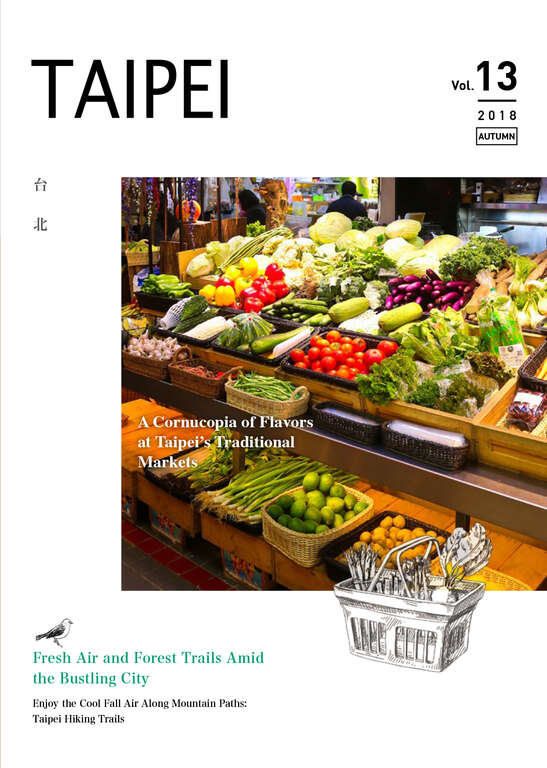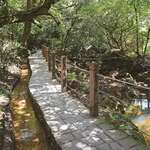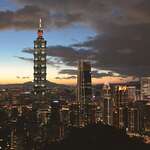Post date:2018-09-11
1540
Hydrangea Blossoms on the Old Rice Paddy –
Shuicheliao and Other Trails of Zhuzihu
Article Zhong Wenping
Photos Li Zhiwei, Taipei City Government Department of Information and Tourism
One never thinks of Taipei as a “rice paddy,” so naturally very few people will know that Taiwan’s japonica rice did not originate in Chiayi (嘉義), nor Tainan (台南), nor Hualien (花蓮), nor Taitung (台東), but did, in fact, begin on Yangmingshan in Taipei. In 1923, two Japanese, Hirasawa Kiichirou and Eikichi Iso chose a location where the weather was moist and cool. The soil there was fertile and there was a lake rimmed with lava, so they set up a base for the purpose of cultivating a new variety of rice. At that time, Zhuzihu was renowned for its fields of green rice plants and not for the calla lilies or hydrangeas, as it is today.
A Former Rice Trade Route is Transformed Into a Floral Hiking Trail
Nowadays, hardly anyone still grows rice at Zhuzihu, and this important part of Taipei’s industrial history has almost disappeared. Luckily the remains of the iconic rice mill known as “Shuicheliao” are still there. Taipei City Geotechnical Engineering Office has restored this former facility, as well as the route used to ship rice, and built a waterway hiking trail into the bargain. They have thus preserved the most important remnants of Zhuzihu’s rice cultivation era.
Take the bus and get off at the Zhuzihu stop, then follow the sign pointing towards Shuicheliao. Then, walk upstream along Southern Sulfur Creek (南磺溪) till you reach the trailhead. This trail, with the creek on one side and farmland on the other, was built by local people for the production and shipping of rice, and is less than 500 meters in length. After walking for about 5 minutes, you’ll see the only rice mill left from Zhuzihu’s early days: Shuicheliao. In addition to the well-preserved stone walls of this mill, you will also find many small wooden, bamboo and iron bridges along the trail. These bridges were built to meet the farmers’ needs, and are now key features of the trail.
Among the many trails of Yangmingshan, Shuicheliao is one of the very few to be built for industrial use. The old rice paddies have been transformed to fields of calla lily, hydrangea and all-season vegetables. This former rice route has now become a popular floral trail in spring and summer.
A Secret Trail in a Mysterious Land
Once you finish Shuicheliao Trail, there’s one more mysterious stroll for you to enjoy in Yangmingshan, that wedding photo hotspot: “The Black Forest.” If you follow Calla Lily Boulevard and walk for about six minutes, you’ll arrive at this atmospheric place. The forest here is mainly composed of Japanese cedars, and when the sun shines through their branches, these tall, slender trees cast shadows on the ground, in shapes that have given it the name: “The Black Forest.”
In addition to this weird arbor, there’s another secret path connecting with Calla Lily Boulevard, one which developed almost accidentally as a short cut. With those Japanese cedars lining the route on both sides, this area is narrower and much darker than the Black Forest, and the misty fog lingering in the air adds a surreal element, reminiscent of the cave inhabited by Totoro, the Japanese animation character.
After experiencing the blossoms of Shuicheliao Trail, the romance of the Black Forest and the misty ambience of the secret path, hikers will leave shrouded in an air of mystery, and will want to visit again some time soon.
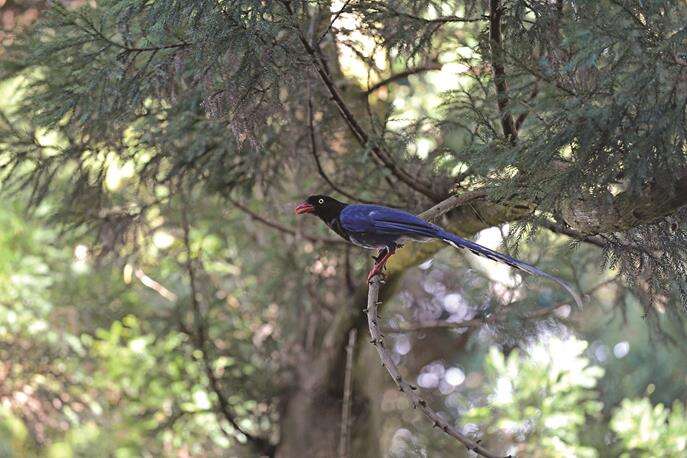
Shuicheliao Trail
Location Zhuzihu, Yangmingshan
Total length 470 meters
Walking time About 30 minutes (It varies from person to person.)
The Colors of the Rainbow Over Yangmingshan
Last November 30th, a rainbow lasting nine hours appeared over Chinese Culture University. It broke the Guinness World’s Record for longevity and has put “looking for the rainbow” on any Yangmingshan must-do list! According to Chou Kun-Hsuan (周昆炫), associate professor at Chinese Culture University’s Department of Atmos-pheric Sciences, there’s always a good chance that a rainbow will appear in the fall or winter. On Yangmingshan, the sun rises in the Southeast, so in the morning, you would only be able to see the rainbow on the northwest side. The sun sets in the Southwest, so in the afternoon, the rainbow would naturally appear on the Northeast side. Lower mountains with good vistas, such as Shamaoshan (紗帽山), provide an even better angle for rainbow watching than the higher peaks.
Gallery
Popular articles
 TAIPEI QUARTERLY 2018 AUTUMN Vol.13
TAIPEI QUARTERLY 2018 AUTUMN Vol.13 Chef Ah Chi – Beitou Market is a Training Ground for Chefs (TAIPEI QUARTERLY 2018 AUTUMN Vol.13)
Chef Ah Chi – Beitou Market is a Training Ground for Chefs (TAIPEI QUARTERLY 2018 AUTUMN Vol.13) Titan Visits Xinfu Market – Seeking Authentic Taiwanese Flavors (TAIPEI QUARTERLY 2018 AUTUMN Vol.13)
Titan Visits Xinfu Market – Seeking Authentic Taiwanese Flavors (TAIPEI QUARTERLY 2018 AUTUMN Vol.13) Enjoy the Cool Fall Air Along Mountain Paths Taipei Hiking Trails (TAIPEI QUARTERLY 2018 AUTUMN Vol.13)
Enjoy the Cool Fall Air Along Mountain Paths Taipei Hiking Trails (TAIPEI QUARTERLY 2018 AUTUMN Vol.13) A Peaceful Heaven Hidden Behind Six Boulders Xiangshan Hiking Trail (TAIPEI QUARTERLY 2018 AUTUMN Vol.13)
A Peaceful Heaven Hidden Behind Six Boulders Xiangshan Hiking Trail (TAIPEI QUARTERLY 2018 AUTUMN Vol.13) A Green Path With Echoes of History – Jiantanshan Hiking Trail (TAIPEI QUARTERLY 2018 AUTUMN Vol.13)
A Green Path With Echoes of History – Jiantanshan Hiking Trail (TAIPEI QUARTERLY 2018 AUTUMN Vol.13)
 Hydrangea Blossoms on the Old Rice Paddy – Shuicheliao and Other Trails of Zhuzihu (TAIPEI QUARTERLY 2018 AUTUMN Vol.13)
Hydrangea Blossoms on the Old Rice Paddy – Shuicheliao and Other Trails of Zhuzihu (TAIPEI QUARTERLY 2018 AUTUMN Vol.13)